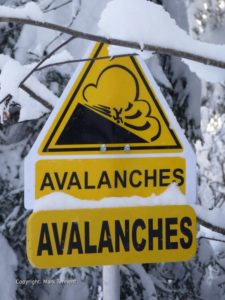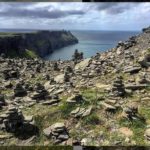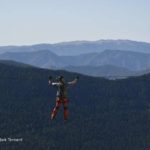Snowshoeing has been around since man searched for a way of getting around in deep snow. It’s now a very popular and growing, winter activity.
- It’s fun! It is suitable for all, young or old, fit or not so fit and it can be enjoyed by the whole family.
- It’s easy! ?If you can walk, you can snowshoe?. Within a few minutes you’ll feel at ease and in control.
- It’s inexpensive! Snowshoes can be purchased for between 100 and 150 Euro and there’s no need for an expensive lift pass!
- It’s as relaxed or as adventurous as you wish! Take a gentle stroll amongst snow-draped trees or push your limits ? the choice is yours. In fact it’s an ideal aerobic, low-impact, exercise.
- In touch with nature! Snowshoeing allows you to move almost silently so experiencing the peace and tranquillity of the snow muffled landscape. It’s a great way to see the wildlife. In Savoie you may see chamois, ibex (bouquetin), or deer that you will never see in the noisy ski resorts.
Equipment
Snowshoes

Popular brands include: TSL, Tubbs, GV and Inook. For those unfamiliar with snowshoes it may conjure up images of a pair of tennis racket-like things attached to your feet. In fact modern snowshoes are high-tech and made from plastic or are aluminium framed. The size of snowshoes is related to your weight so, in general, snowshoes for women are smaller than they are for men. Most are very simple to adjust for the size of your footwear and then a simple binding system attaches them to your boot.
The idea of the snowshoe is to spread your weight so you don’t sink into the snow; or at least not nearly so much, giving access to places impossible on foot. Going up hill is made easier with the use of a heel lift feature which means there’s less strain on your calf muscles. Grip is provided by small metal spikes (crampons) under the snowshoe that will stop you slipping on hard snow or patches of ice. At the front there are ?claws? or ?front points? which provide grip when going directly up steep slopes.
Ski or Trekking Poles
A pair of ski poles / trekking poles with large ?snow baskets? can aid your stability and also provide additional impetus to your stride.
Boots
You don’t need special boots; a pair of good walking boots / snow boots is ideal, with gaiters or a pair of trousers with a snow cuff the ideal companion to avoid snow entering the top of your boots.
Clothing
No special clothes are needed. Warm clothes e.g. fleece jackets, wind/waterproof jacket, hat, gloves as you would wear for walking in the winter.
Extras
Don’t forget your sunglasses and some sun cream! A small rucsac is recommended to carry an extra windproof /waterproof top, fleece jacket, a drink and snacks.
Technique ? a few tips
Snowshoeing doesn’t have a steep learning curve but a few tips will soon have you moving around confidently enjoying a new-found freedom.
On the flat
Your style of walking will need to take account of the width of the snowshoe and to avoid stepping on the other snowshoe. It’s best to start out on a level path or track whilst you get accustomed to them. Turning around is best accomplished by turning in small steps until facing in the new direction or doing a ?kick turn?.
Downhill
Going downhill is easiest, and the most fun, in deep powdery snow. Raise the toe slightly allowing the tail of the snowshoe to come into contact with the snow first. Try to walk confidently with a good transfer of weight from one foot to the other. The snowshoe may slide forward a bit but avoid the temptation to lean back. You can use your pole to provide extra balance but avoid using them directly in front of your body. On firm snow place the snowshoe flat on the ground so that the crampons can ?bite?.
Uphill
Unless it’s a very short distance, ?zig-zag? up the slope using the terrain to best advantage. This puts less strain on the legs and you’ll gain height surprisingly easily. If you encounter a very steep bank you can use the ?claws?/?front points? of the snowshoe.
Traversing
This is easiest in soft snow conditions where you can still place the snowshoe down normally. When the snow is firm you will need to roll the ankle to allow the snowshoe to lie flat on the slope, thus allowing the crampons to “bite”.
Etiquette
If you’re snowshoeing avoid walking on prepared ?pistes? for cross-country skiers as the railway like ?tracks? are damaged by walking on them. Skiers may also approach fast and you don’t want to be involved in a collision. In ski resorts try and avoid the pistes but if you have to, cross quickly or walk up or down the edge of the piste.
Precautions

Naturally if you go into more mountainous terrain you should be aware of the risk of avalanches. You should then carry normal avalanche equipment (avalanche transceiver, shovel and probe) and most importantly know how to use it. Let someone know where you are going and when you intend to be back. Read my article on Mountain Rescue in the French Alps.
Where?
You can go snowshoeing anywhere there is snow!
On paths and tracks you don’t need much depth however going through woods it’s best with a bit more depth that covers The ground can be flat, undulating or even on more mountainous terrain. The world’s your oyster! Of course you can always join me on a Guided Snowshoe holiday.
Article copyright: Mark Tennent – all rights reserved


